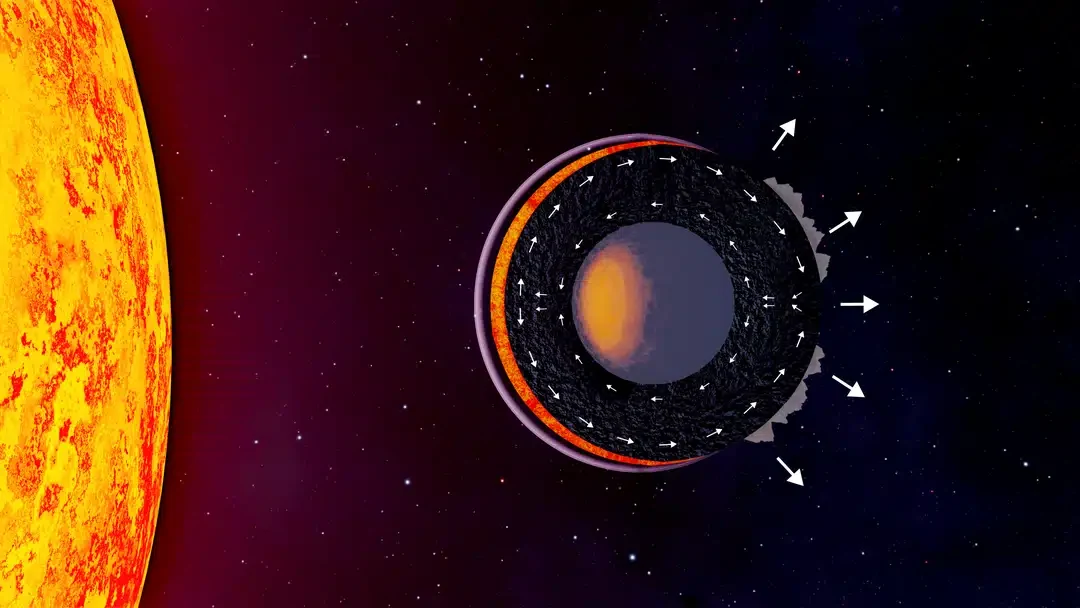Lava planets are pushing the boundaries of what we think we know about planets. Some of these extreme worlds are just as large as Earth, but they orbit their stars at such close distances that an entire year on one barely lasts longer than a single day! Their surfaces blister with temperatures capable of melting or even turning stone into gas, forcing us to rethink our usual understanding of rocky planets like Earth, Mars, and Venus. Despite the extreme conditions, these worlds present a golden opportunity to study how rocky planets evolve over billions of years.
Decoding the Chemistry of Molten Worlds
A groundbreaking new study in Nature Astronomy by Charles-Édouard Boukaré, a physics professor at York University, drops some serious knowledge on how we can understand these fiery planets better. By blending geophysics, atmospheric study, and mineral chemistry, Boukaré’s team delved into how molten rock, vapor, and the solid crust work together over immense time scales.
According to Boukaré, “Lava planets have such wild orbital setups that our traditional view of rocky planets here in the solar system doesn’t really apply.” Using fancy numerical simulations, the researchers found that in younger lava planets, the interior stays totally molten, leading to smooth heat circulation, and making their atmospheres a direct reflection of the planet’s composition.
The Cycle of Chemical Evolution
The heart of this study revolves around the idea of chemical distillation. When rock melts or vaporizes, various elements separate based on their physical characteristics. Heavier elements like magnesium and silicon remain as liquids or solids, while lighter elements such as sodium and potassium drift into vapor. This ongoing cycle of melting, evaporating, and solidifying fundamentally changes the layers on the surface of these planets.
As Boukaré points out, “These processes, while much more intensified in lava planets, are actually the same kinds of things that shape rocky planets in our own solar system.” Here on Earth, we see similar patterns in ancient lava flows and crusts, but on lava planets, these processes happen all the time, sped up by the fiery conditions and the loss of atmosphere.
The research also showed that the magma oceans on lava planets don’t solidify quickly like those on the younger planets in our solar system. Instead, they stay molten for billions of years, creating a long-lasting separation of vapor, liquid, and solid phases.
James Webb Telescope Set to Verify Findings
To back up their findings, the team has scored 100 hours of observation time with the James Webb Space Telescope (JWST). With its advanced infrared sensors, scientists will dive deep into the atmospheric details of these lava planets, checking for the presence of elements like sodium and potassium. Whether they spot these elements could indicate if a lava planet is still molten or has moved on to a more solidified form.
As Boukaré states, “If we can spot differences between old lava planets and young ones, it would represent a significant advancement from just examining snapshots of exoplanets.” The lead observations will be handled by Prof. Lisa Dang from the University of Waterloo, aiming to link atmospheric data to the internal dynamics of these extreme planets.
The insight from this research could not only transform our understanding of lava planets but also shed light on rocky planet evolution as a whole—which includes recognizing how early Earth and other potentially habitable worlds formed.
This Planet’s Winds and Its Chemical Story
The tidal locking on lava planets brings another exciting dynamic into the mix: a significant contrast between their blazing hot daysides and ice-cold nightsides. Supercharged winds from this temperature variation stir up vapor and heat around the planet, shifting materials from one hemisphere to the other.
Previous studies have looked at these winds but often overlooked how the molten rock interacts with the solid mantle beneath. The new research fills this gap by utilizing 3D simulations to track how elements like magnesium, silicon, and iron behave differently depending on their state.
Liked this article?Subscribe to our free newsletter for engaging stories, exclusive content, and fresh news.
Keep up with more similar content at Dailygalaxy.com.




















